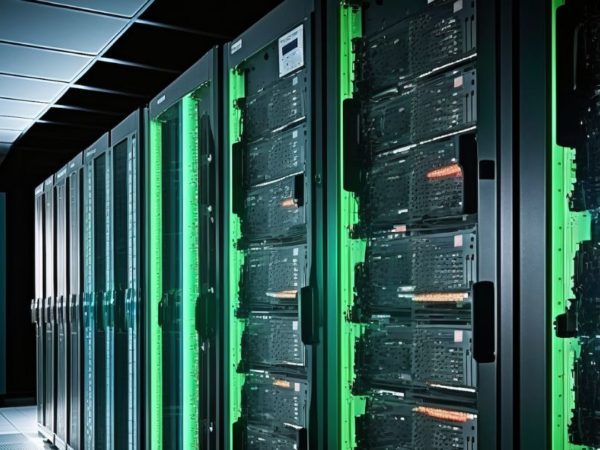If you are into the virtualization and containerization world, you’ve likely encountered Podman and Docker and you might be wondering how are they different from each other.
In this post, we will explore the differences between Docker and Podman and try to find which one will be the right choice for you!
Docker
Docker is a containerization technology that facilitates dependency management within a project at all levels (development and deployment).
Available on Linux, Windows, and Mac OS, Docker’s mechanism centers around containers and their orchestration, and this is where containerization differs from virtualization.
Docker has two main building blocks: Docker CLI and Docker Daemon.
Docker Daemon:
It is a constant background process that helps manage Docker images, containers, networks and storage volumes. Docker uses its Docker Engine REST API to interact with the Docker daemon, accessed via HTTP protocol.
Docker CLI:
It is the Docker command line client for interacting with the Docker daemon. It is what you use when you run any Docker command.
The operation of Docker is based on the Linux kernel and the functions of this kernel, such as cgroups and namespaces. These functions separate the processes so that they can run independently, as the purpose of containers is to run multiple processes and applications separately.
This is what makes it possible to optimize the use of the infrastructure without reducing the level of security compared to the separate systems.
All container tools like Docker come with an image-based deployment model. This model simplifies sharing an application or set of services across multiple environments.
Additionally, Docker helps automate the deployment of applications within a container environment. With these various tools, users gain full access to applications and can accelerate deployment, control versions and assign them.
Podman
Podman (the POD MANager ) builds, runs, and manages OCI containers and container images. It was developed by Red Hat and originally intended for its enterprise Linux 8. It is used for container management and acts as the official successor to Docker.
Red Hat consequently discontinued support for Docker but assured that the switch would be easy for users since Podman is based on Docker though originally it was only intended as a debugging tool.
It manages the entire container ecosystem using the libpod library. Since Podman only works on Linux platforms, a REST API and clients are currently in development to allow Mac and Windows systems to call the service.
However, there is currently a Varlink- based remote client that works on Mac or Windows platforms that allows remote communication with a Linux-based Podman server. The libpod library supports multiple methods to upload images securely, including trust and image verification.
It also supports pods to manage groups of containers together and multiple image formats, including OCI and Docker image formats.
In very small and manageable environments, Podman can even serve as a precursor to Kubernetes. It bridges the gap between the singular management of individual instances from the early years of the container hype and modern orchestration with Kubernetes.
Ambitious container users can already enjoy the next level with the pods. The construction and operation of a Kubernetes cluster are no longer necessary. In the simplest case, newly designed pods can be tested and improved in individual operations. Even a subsequent transfer to Kubernetes is possible.
The command podman generate kube supplies the corresponding configuration files. These then serve one-to-one as input for the Kubernetes tool kubectl.
Current versions of Podman can even create configuration files for systemd – a treat for anyone who uses the ubiquitous init successor for container orchestration.
Podman vs Docker: Differences
Docker has quickly established itself as the hobbyhorse for managing containers. However, Docker has many advantages and, above all, the rapidly growing repertoire of images, as well as disadvantages and possible security risks. Moreover, Docker is no longer supported as a container for Kubernetes.
The fact that containers, in contrast to virtual systems, do not require their kernel is usually seen as one of the great advantages. However, it poses a major security risk with Docker because Docker containers can only be run with root privileges.
It allows processes running in the containers to access the kernel with root privileges and thus attack the host system.
The first distinction is apparent when you first use it. While Docker requires the Docker daemon to be started first, a Podman container can be started directly from the command line. So there is no background process, and the application is only executed when needed.
From a security perspective, this is good because Podman is less vulnerable to attack if the daemon doesn’t have to run 24/7 with superuser privileges. Podman does not require a background process due to the architecture, which differs fundamentally from Docker.
While Docker follows the client-server model, where the Docker client communicates with the Docker daemon via an API, Podman follows the fork-exec model. Each container runs as a child process of Podman.
A user namespace is created on first use when Podman is run with normal user privileges. In the user namespace, Podman runs with root privileges and has the rights to mount file systems and create containers.
Accordingly, the Podman container only has the rights that the executing user has. Using user namespaces means that each user can create and manage their own containers, but these are not visible to other users and the superuser.
Because Podman is operated independently of Docker, the developers have a lot of leeway and can respond to the community’s wishes. Interesting additions to Podman include the mount/unmount command and systemd integration.
The host can use the mount/unmount command to mount the container’s file system, for example, to access or change files and then unmount them again.
While monitoring the containers using systemd does not work due to the daemon in Docker with Podman, containers can be started, monitored, and even restarted via systemd.
In addition, Podman provides the podman generate systemd command, which generates a corresponding systemd service for the respective container and thus relieves the user of the creation of the systemd services, which means that the integration on the host system is available.
Another crucial difference between Podman and Docker is that the latter does not change the firewall rules or current dnsmasq install because of its ability to create an internal network. In contrast, Docker has to overwrite the firewall rules to enable inter-container communication.
| Podman | Docker | |
| Architecture | Daemon | Daemon less |
| Services Management | Systemd | Docker Engine |
| Firewall Compatibility | Overwrites firewall rules | Respects firewall rules |
| Platform | Native support for linux | Linux, Windows, and Mac |
When should you migrate from Docker to Podman
If you are deploying containers in an RHEL-based environment, in that case, you don’t have many options except to use Podman as it is RHEL native. You can also migrate to or choose Podman over Docker if you have small deployments with few containers.
However, if you want to get any more complex than that, have multiple containers and a stack of coordinating containers with docker-compose/podman-compose over a network. It’s better to use Docker as it handles networking much better.
Similarly, if you are just starting to enter into the container world, in that case, Docker is a better option as it is stable, well-established with proper documentation, and has a shallow learning curve compared to Podman, which still lacks stability and does not have well-defined documentation.
Migration from Podman to Docker
If you are on the command line, it is quite easy to switch from Docker Engine to Podman. At its simplest, a $ alias docker=podman command most of the time works.
Of course, this assumes that the appropriate software is installed on the system. In the case of Linux, this is not a problem either; ready-made software packages are available for commercially available distributions.
Windows or macOS are not among the supported operating systems. The alias approach works because many Docker commands have a Podman equivalent.
But there are also exceptions as some Docker commands have no counterpart in the Podman world. Similarly, some commands behave differently in Docker than in the Podman universe. At the moment, this only affects the handling of volumes that have already been set up.
The switch is a bit more difficult when graphical tools such as Docker Desktop are in use. It should particularly affect those developers who work with Windows or macOS.
Docker Desktop users will have to get used to the command line, and the same applies to Docker compose. However, there is the podman-compose project. Written in Python, the software serves as a replacement for Docker compose.
Final Words
The replacement of Docker by Podman can be considered almost done. For users and administrators, most aspects of this change are easy. Many Docker features have identical equivalents in Podman.
A real benefit is the lack of a singular daemon process and root privileges, not to mention the natural use of container groups. However, it is worth mentioning that Docker remains the main technology regarding containers, but this will most likely change in the long run.
You may also explore some Docker commands to manage containers.



